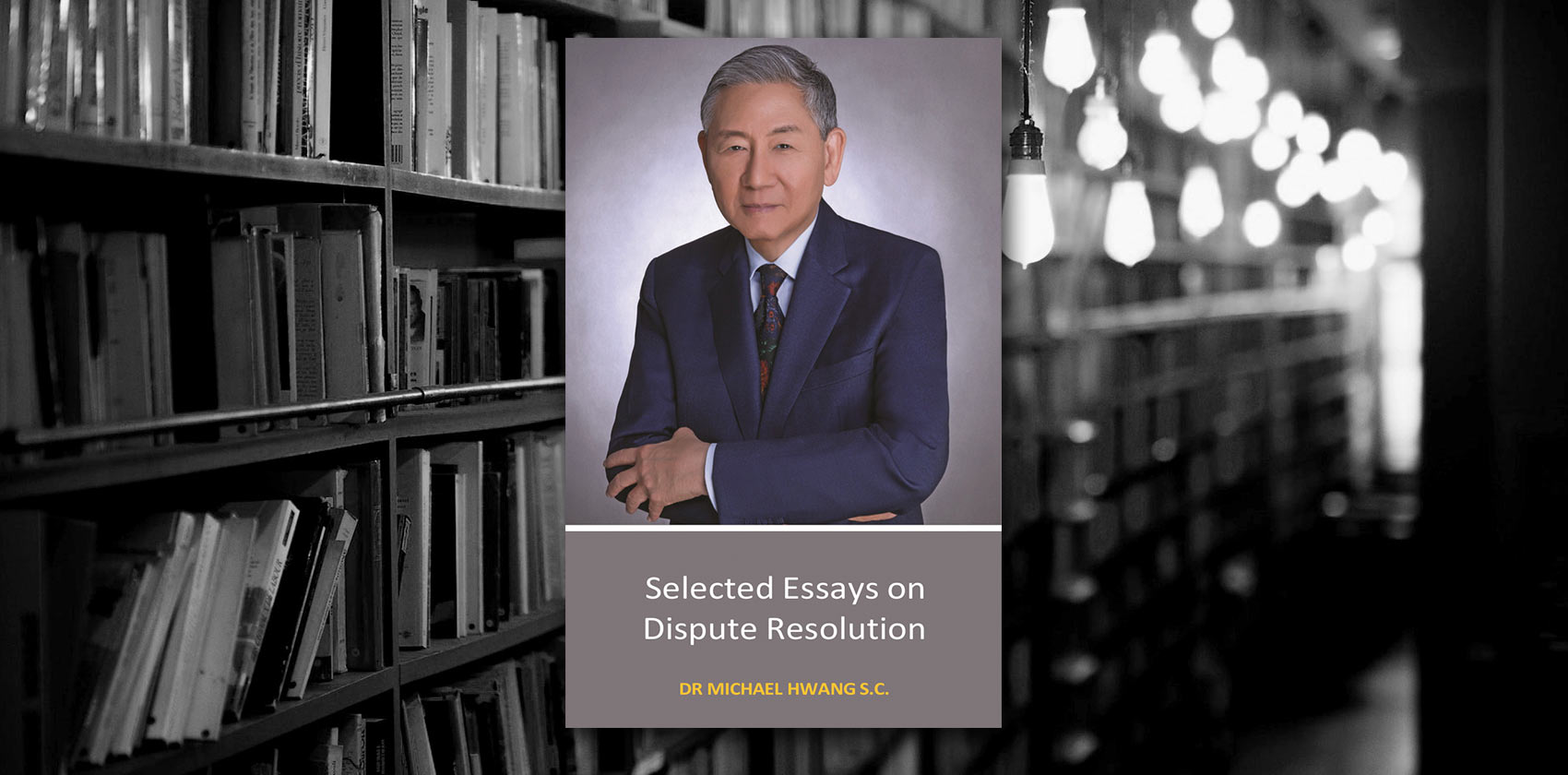Selected Essays on Dispute Resolution, Dr Michael Hwang SC
When Michael Hwang SC decided to retire from the partnership of the significant law firm he had spent his entire practising career at to practice as an arbitrator, he was generous in his comments to those he had worked with and modest in his desire to do more directly himself. Some 15 years later, the output of that more direct personal involvement is indisputably extensive, with the visible parts being acclaim as an internationally recognised arbitrator, the chief justice of the Dubai International Financial Centre Courts and counsel, on a selective basis, in cases of importance in the courts of Singapore. The last illustrates the qualities of rigour and respect for values, including values extending beyond the law, that accomplished lawyers such as Davinder Singh SC and Gary Born have paid tribute to – see for example BOK v BOL [2017] SGHC 216 (on appeal BOM v BOK [2018] SGCA 83) which is now the leading case on the doctrine of undue influence in Singapore contract law.
The less visible parts of the involvement will have at least an equally long effect. Hwang, in his words, in his second life as a practitioner engaged “… bright and promising young lawyers at or near the beginning of their professional lives … They have had the opportunity to work in a small office, with direct access to me on a daily basis …”. The opportunity meant work on awards, judgments, submissions, articles, commentaries and speeches, each piece researched, considered, reasoned, drafted, re-drafted, reviewed and then, finally, signed off. The subject matter would have varied, largely contractual but not so confined – see Lassiter Ann Masters v To Keng Lam [2005] 2 SLR(R) 8 a case on damages for wrongful death and the eventual law reform in the Civil Law (Amendment) Act 2009 to allow claims for “loss of inheritance” (now section 22(1A) Civil Law Act (Cap. 43). There would have been discussions, debates, reviews and regular reflections. In 1992, Hwang decided, as judicial commissioner sitting in the High Court of Singapore, a case concerning the sale and purchase of land where the land was compulsorily acquired between the date of the contract and before completion: Sheriffa Taibah v Lim Kim Som [1992] 1 SLR(R) 375. The Court of Appeal reversed his decision ([1994] 1 SLR(R) 233) and he continued to follow the jurisprudence on the subject, eventually writing an article in 2000 after the Privy Council (E Johnson & Co (Barbados) Ltd v NSR Ltd [1997] AC 400) reasoned differently from the Court of Appeal in Lim Kim Som.
The collection of material in Selected Essays on Dispute Resolution address issues that were and are of particular interest to Hwang. They range from the conceptual (The Chimera of Admissibility in International Arbitration) to the practical (Two Failed Mediations and the Lessons Learnt from Them). They explain the thinking of tribunals on some aspects that cut across all proceedings which repay reading no matter how long in the tooth one thinks of oneself (Effective Cross Examination in Asian Arbitrations; How May the Quantum of Legal Costs Claimed by a Winning Party Be Controlled). They are a resource for an independent view on issues that disputes lawyers will come across during their careers and are relevant for a wider audience than just arbitration lawyers. More than a setting out of Hwang’s views, the materials demonstrate the value of sound first principles. In a discussion on the control, by an arbitral tribunal or an arbitral institution, of the legal costs which a winning party may claim in arbitration proceedings, we are reminded that costs are a function of time and time is in turn, largely, linked to the monetary amounts at stake. We are then challenged to consider, among other factors, the choice of law firm and lawyers given the level of difficulty and complexity presented by the case, and what were the reasonable market charge out rates of the lawyers concerned, preferably in comparison with the charge-out rates of comparable law firms. This last-mentioned point acknowledges that practice functions in the market place and legal services are provided in the context of a market economy. And the discussion reminds us that the considerations that apply to controlling the claimable costs do not apply to the fees lawyers may charge their own clients as that depends on the instructions given by and the legal strategy adopted by, assuming proper legal advice, the clients.
The collection covers more than legal and practice issues. They help us understand the values of our profession. Rule 29 of the Legal Profession (Professional Conduct) Rules 2015 should be familiar to all litigation lawyers – to not permit an allegation to be made against another legal practitioner in any document filed in court proceedings unless the other practitioner is given an opportunity to respond to the allegation. Hwang writes of a time when he was asked to sue a law firm for helping to commit a fraud on his client. A lawyer in that firm had witnessed a signature on a mortgage deed that had been forged. Prior to filing the writ, Hwang met the senior partner and other partners to explain his client’s instructions. He heard out their explanation and explained that while he did not think the firm had conspired with the fraudster, they had acted negligently. Hwang writes “… I did not learn this from the books because I had seen this done when I was a young lawyer – the courtesies exchanged between very senior lawyers and the proper way to further your client’s interests while giving due consideration to the interests of our fellow practitioners had left a lasting impression on me …”. These words were written some 40 years into legal practice. They put the depth of the printed words of Rule 29 and, to use an old fashioned word, the traditions of our profession into perspective.
Values, consistency of first principles, intellectual rigour and intellectual honesty, and an abiding interest in the law and the profession run through the essays in this collection. They are a valuable record and resource for all lawyers, though particularly disputes lawyers, of varying ages and experience. They enable the reader to access some of the lessons learnt by those who have had the benefit of working with Hwang. They are not and cannot be a substitute for that privilege in the way that the printed word cannot replicate interaction and experiences that make up the intangible things that shape each of us.







